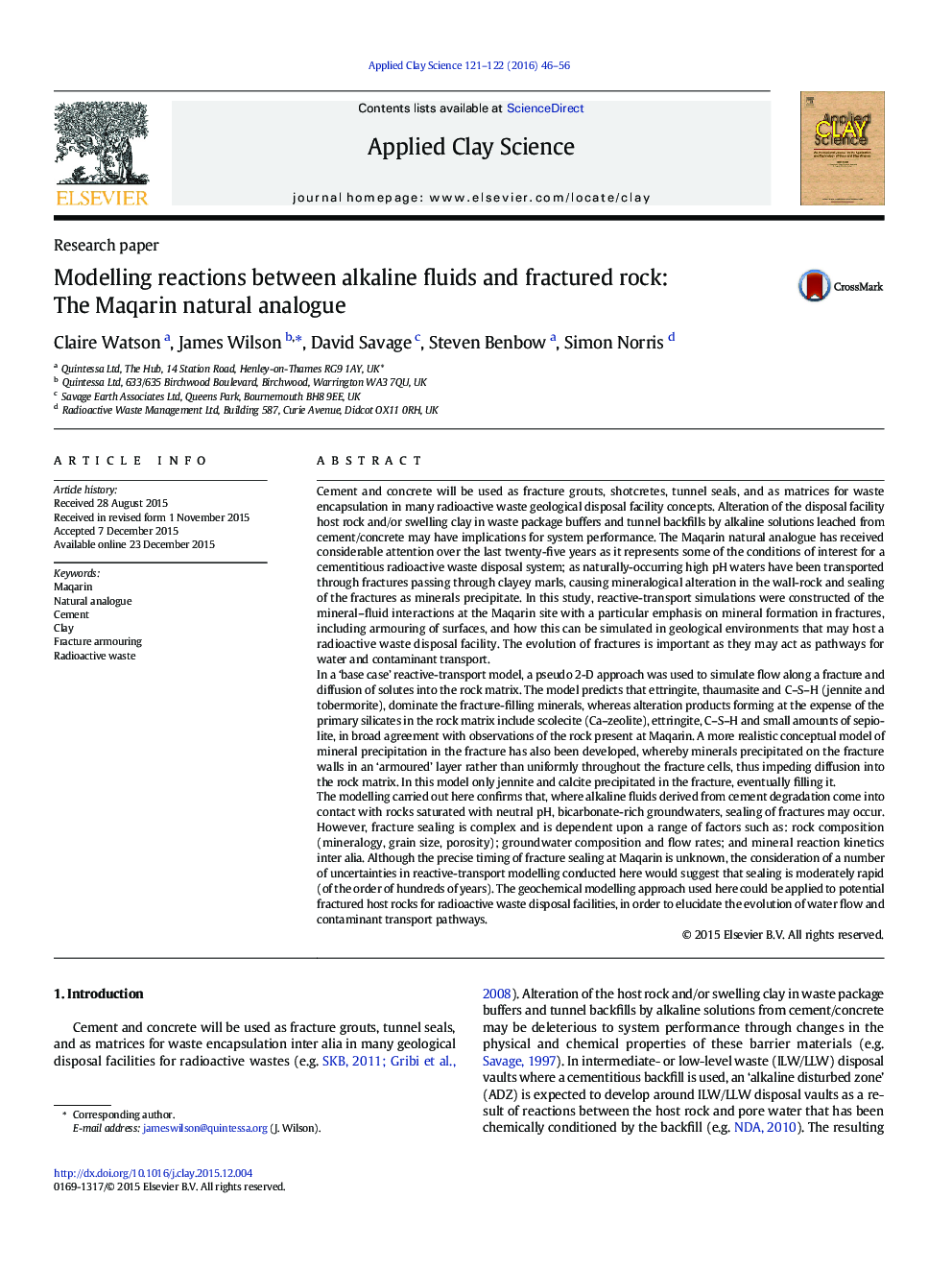| Article ID | Journal | Published Year | Pages | File Type |
|---|---|---|---|---|
| 1694191 | Applied Clay Science | 2016 | 11 Pages |
Abstract
The modelling carried out here confirms that, where alkaline fluids derived from cement degradation come into contact with rocks saturated with neutral pH, bicarbonate-rich groundwaters, sealing of fractures may occur. However, fracture sealing is complex and is dependent upon a range of factors such as: rock composition (mineralogy, grain size, porosity); groundwater composition and flow rates; and mineral reaction kinetics inter alia. Although the precise timing of fracture sealing at Maqarin is unknown, the consideration of a number of uncertainties in reactive-transport modelling conducted here would suggest that sealing is moderately rapid (of the order of hundreds of years). The geochemical modelling approach used here could be applied to potential fractured host rocks for radioactive waste disposal facilities, in order to elucidate the evolution of water flow and contaminant transport pathways.
Related Topics
Physical Sciences and Engineering
Earth and Planetary Sciences
Geochemistry and Petrology
Authors
Claire Watson, James Wilson, David Savage, Steven Benbow, Simon Norris,
